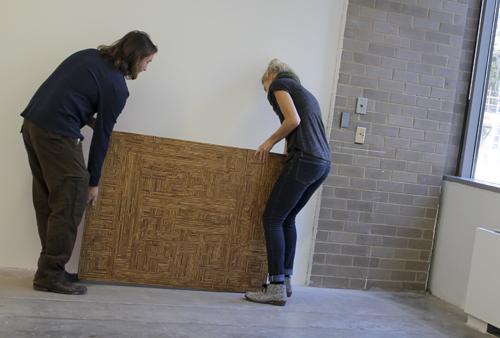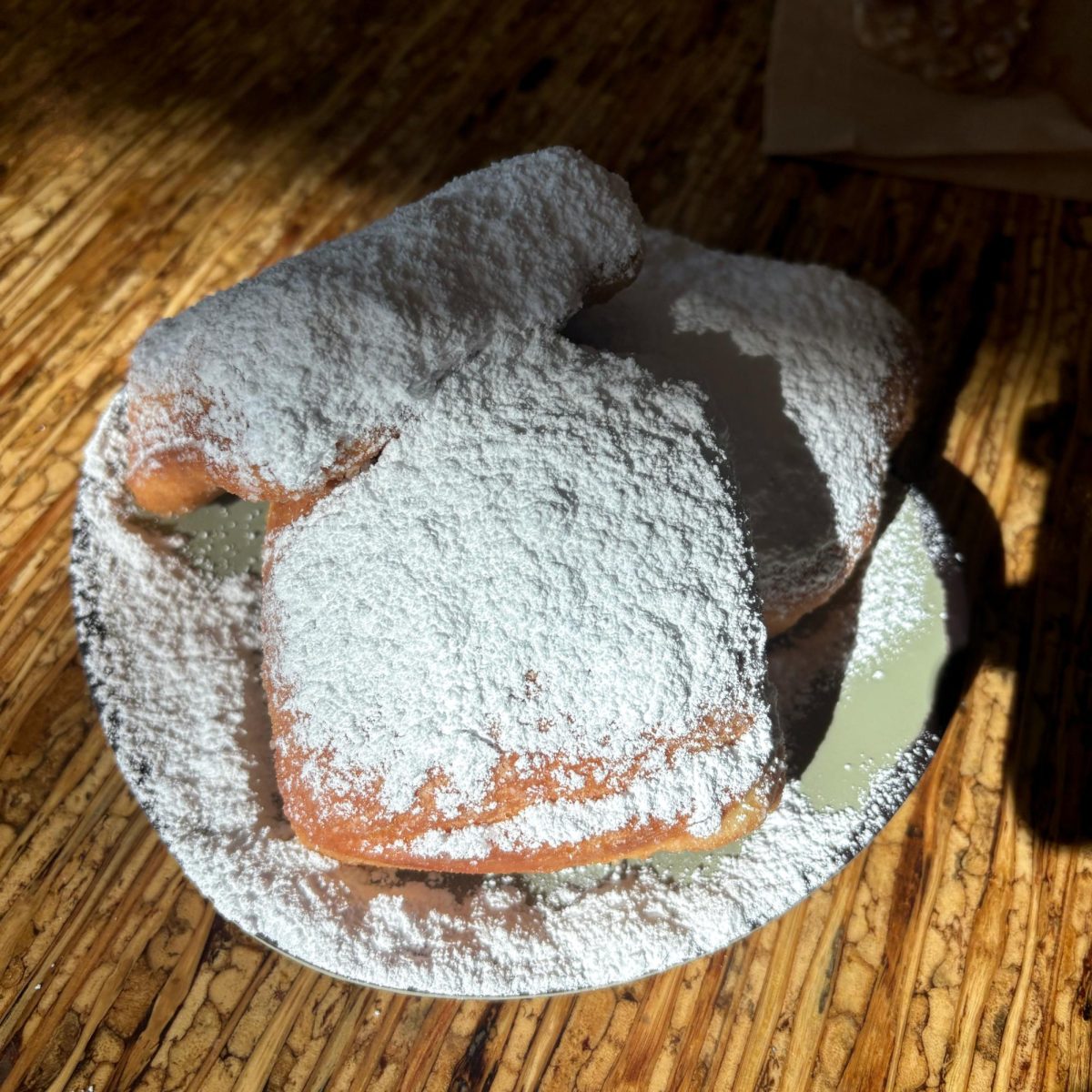
This post was written by Hatchet reporter Fletcher Karper.
Out of seven artists featured in Gallery 102’s “Caged In” exhibition opening Sept. 16, Travis Beauchene is the only GW student. Hatchet reporter Fletcher Karper spoke with Beauchene, who is earning his master’s degree in fine arts, about the inspiration behind his unique contribution to the exhibition, focusing on American composer John Cage. This interview has been lightly edited for length.
HATCHET: How did you get involved with Gallery 102?
BEAUCHENE: Last year when I was coming into the graduate program, I was appointed to be the president of the Gallery 102. It’s run by the students and I’m the president and exhibition coordinator.
HATCHET: Can you describe your contribution to the exhibition?
BEAUCHENE: My piece is probably the most unconventional piece. I didn’t do it on canvas, I didn’t really use paint in a sense. So I essentially pushed the notion of painting, which John Cage was all about pushing the notion of music, so I found it pretty fitting to do that. So my piece is made out of plywood, except not just painting on plywood. I cut everything down into strips and then I actually turned it inside out. You know how on the edge of plywood you see those four or so layers of plywood? So I cut them down into these three quarter-inch segments and I put them back together, so I basically turned this four-foot-by eight-foot piece of plywood and reversed it.
HATCHET: How is it related to John Cage?
BEAUCHENE: There was a piece that John Cage did called Williams Mix. He had this magnetic tape, just like a tape cassette and he spliced it and had all these recorded sounds. The whole point of the song was to see how he could push the potential of magnetic tape. And back then, splicing was pretty inventive, now it’s like how all music is made. But back then everyone is actually using that magnetic tape and you cut it and essentially glue it back together.
HATCHET: Can you explain more about how the piece was constructed?
BEAUCHENE: There’s about 20 layers of stain and there’s about like 25 layers of glass varnish just applied really thinly, and you just keep repeating that step. It was a very meticulous and repetitive action so now it has a really high gloss look to it.
HATCHET: Have you ever done a piece like this before?
BEAUCHENE: This was the first piece I’ve made in this mindset, this arrangement. I do a lot of woodworking in general, but never cutting down plywood and reversing it. So for me it was very exciting. I had this idea and it was like, ‘Oh can it be done?’ so you go through all these steps and its like I think it’s working, I think it’s working and it works.
HATCHET: Why did you base your piece off the Williams mix?
BEAUCHENE: Basically that piece has like eight different recordings playing at once and the audience actually hated it, because its like all these sounds and it’s the sound of chaos. And there’s a lot of mathematics behind it, but the audience started booing in the middle of it, so I mean that stood out to me. It doesn’t have to be liked by everyone.




